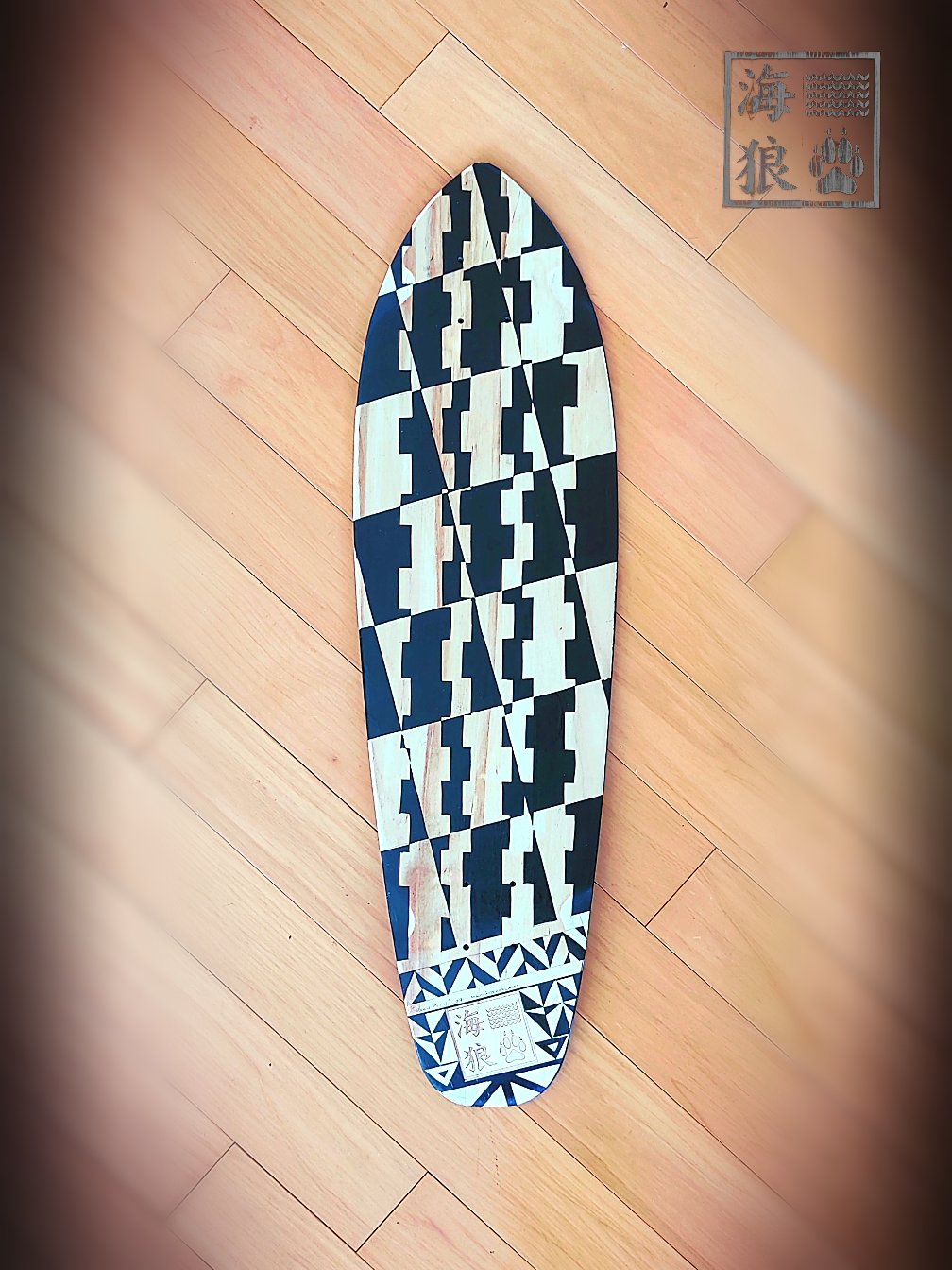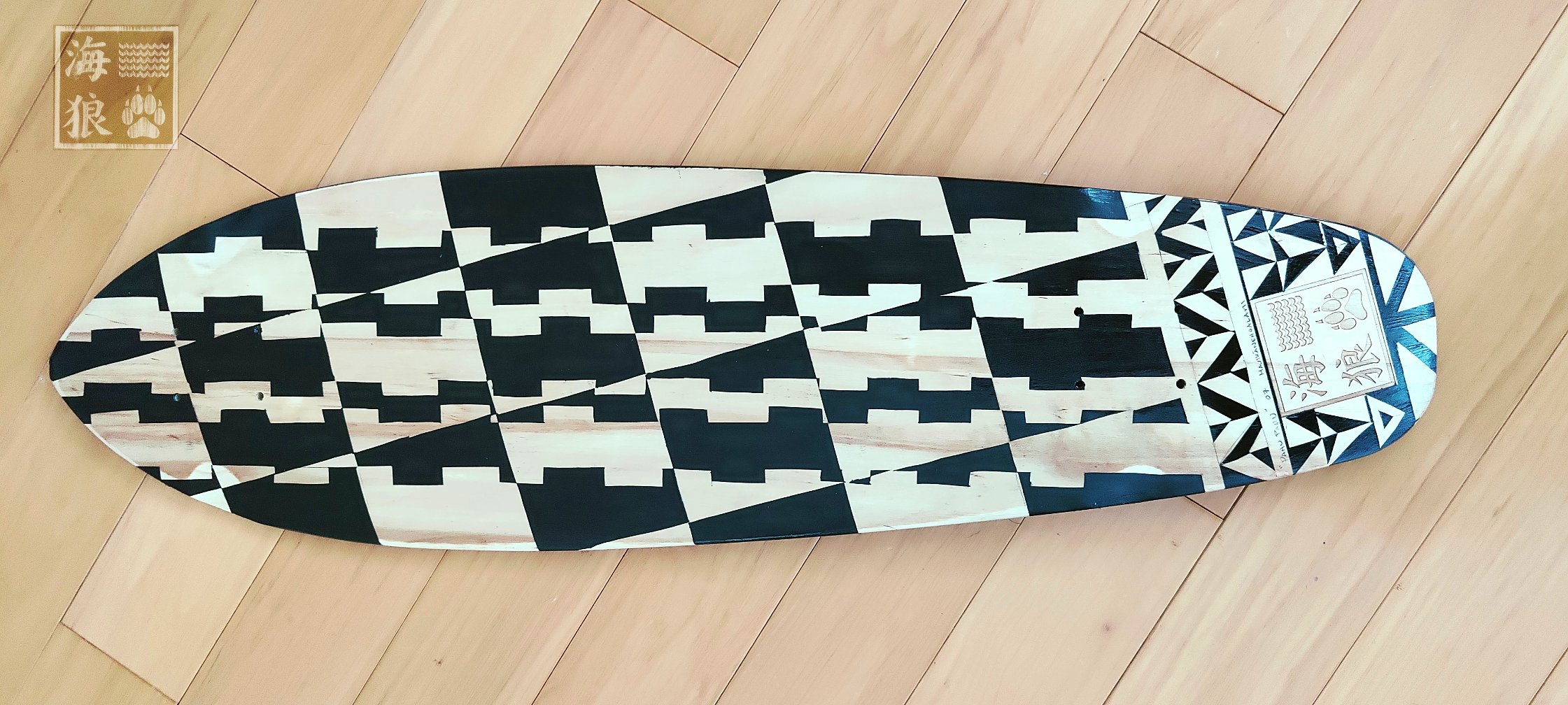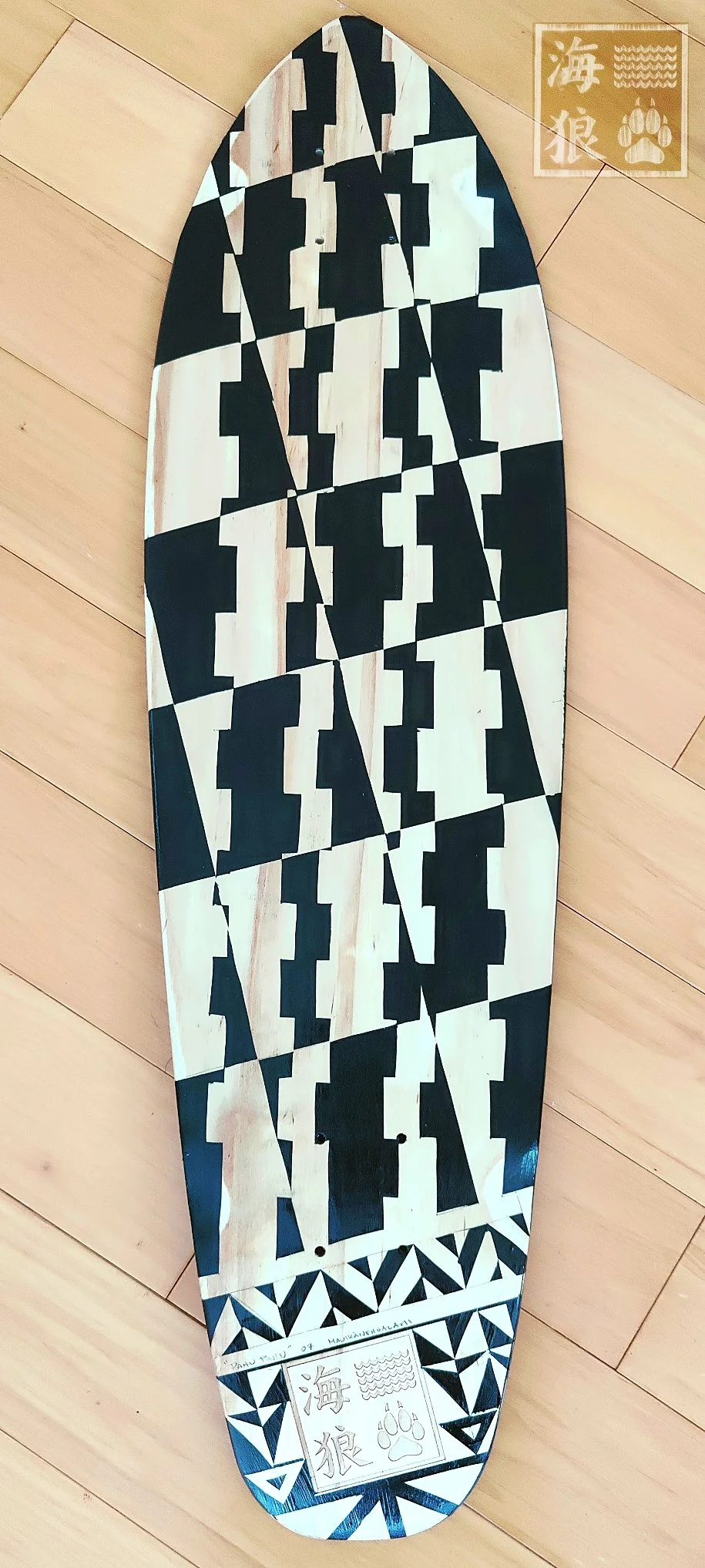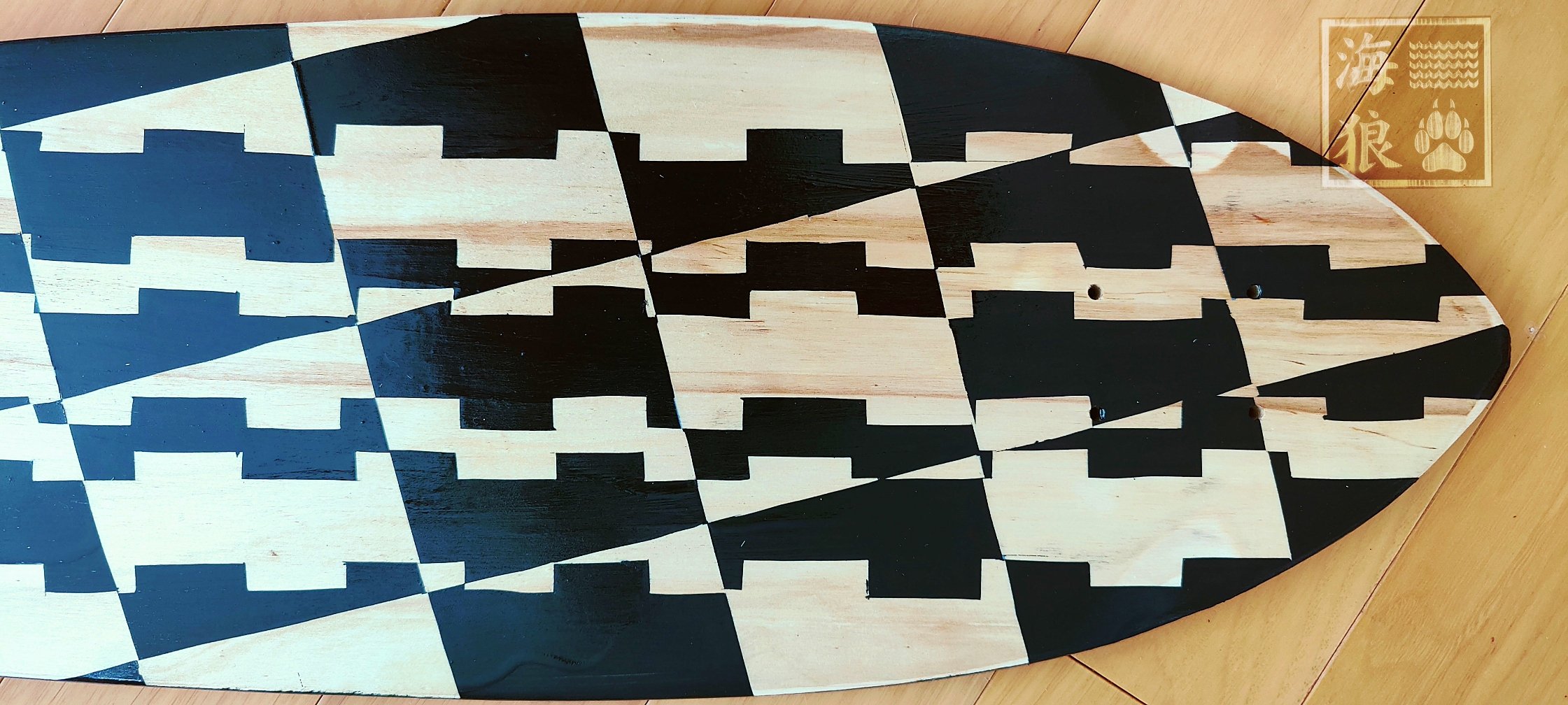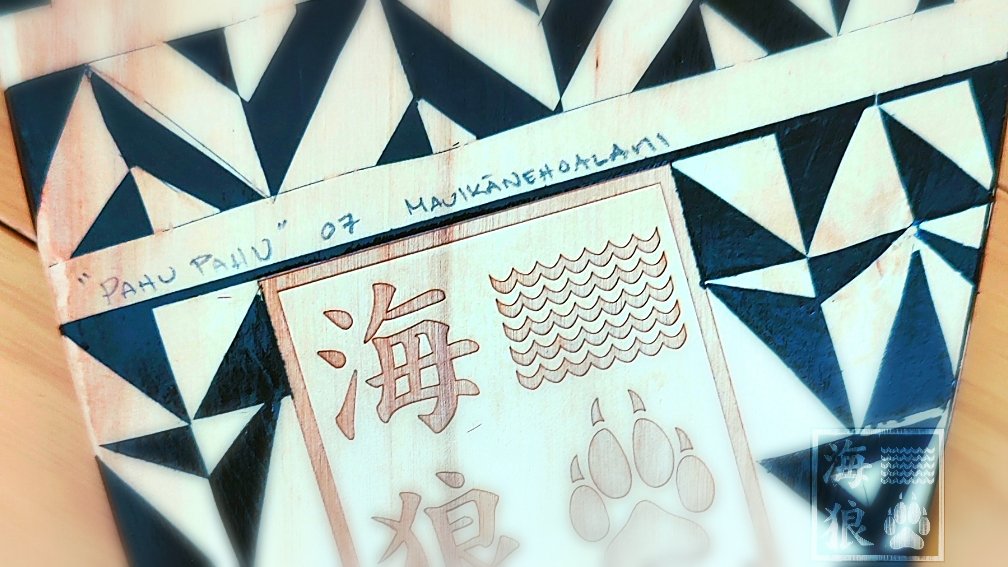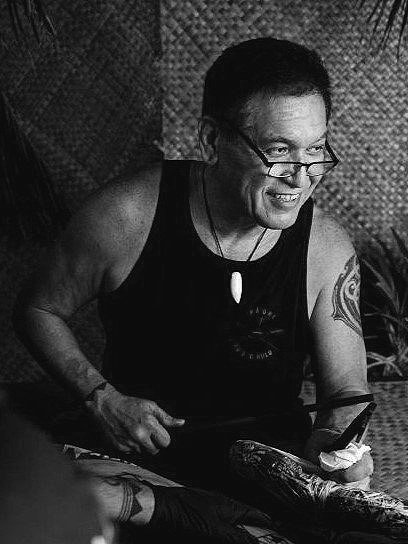 Image 1 of 6
Image 1 of 6

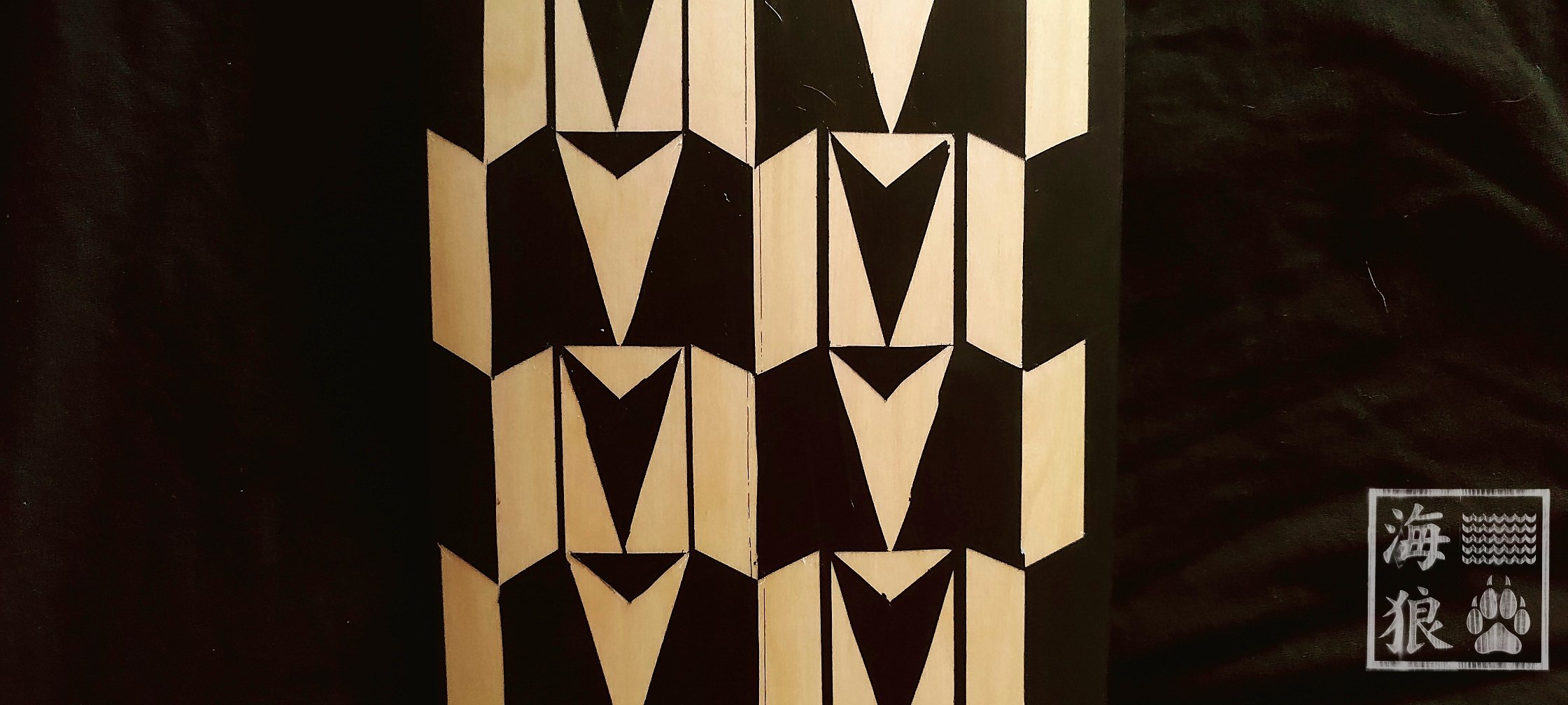 Image 2 of 6
Image 2 of 6

 Image 3 of 6
Image 3 of 6

 Image 4 of 6
Image 4 of 6

 Image 5 of 6
Image 5 of 6

 Image 6 of 6
Image 6 of 6







"PAHU PAHU" 06 MAKA'IHE X YABANE - FINE ART SKATEBOARD DECK
Proudly designed & produced exclusively in Honolulu, Hawai’i
31.7” / 80.6 cm overall length; 8” / 20cm width
7-ply Canadian Maple & Acrylic Ink
Includes a certificate of Authenticity, signed by KAIROU Waterman founders Mark Mauikanehoalani Lovell & Paul Kaleionamauia Okami
Native Hawaiian Made.
“Pahu Pahu” 06 draws inspiration from textiles common to feudal Japan and their patterns. The juxtaposition of Japanese patterns against Hawaiian tattoo motifs represents a style that KAIROU founder Mauikanehoalani Lovell has dubbed niokepani: nio- being a homophone of ‘neo’ (νεο-), the Greek prefix meaning “new” or “novel”; and kepani - being a transliteration of the word ‘Japanese’ in the Hawaiian tongue.
Patterns used and popularized in traditional Japanese clothing are called Wagara (和柄). They originate from an era of Japan’s history known as the Heian period (occurring roughly between the 8th and 11th century). Like all works of art, each wagara composition was originally conceived to decorate. Traditional utilitarian clothing like the Kimono and Yukata became an ideal canvas. Garments featuring wagara were considered more distinctive, more colorful, and more desirable - projecting status, wealth, or influence. Some unique designs were specially reserved for social elites, royal courtiers, warlords, as well as for the Shogun himself.
“Pahu Pahu” 06’s wagara pattern is a variation of Yagasuri (矢絣) - otherwise known as Yabane (矢羽根). The pattern represents the fletching - or bird feathers - of an archer’s arrow. During New Year's Day celebrations, decorative arrows were kept as lucky charms to repel evil and protect the home. The motif is symbolic of protection and good luck. Two vertical rows of contrasting maka’ihe (spear tip motifs) flank the spine of the board, and reinforce a subtle visual association with traditional weapons of war.
The board itself is made of 100% Canadian Maple - a choice wood for high performance skateboards, prized for its lightness, strength, and durability. The ink is acid-free black acrylic - rich, dark, and weather resistant. This piece will add culture and style to your life, whether hanging in your home or office, skating the park, or “sidewalk surfing” around the neighborhood.
Each iteration of the “Pahu Pahu” Fine Art Series is unique and genuinely one-of-a-kind. None will ever be reproduced.
Proudly designed & produced exclusively in Honolulu, Hawai’i
31.7” / 80.6 cm overall length; 8” / 20cm width
7-ply Canadian Maple & Acrylic Ink
Includes a certificate of Authenticity, signed by KAIROU Waterman founders Mark Mauikanehoalani Lovell & Paul Kaleionamauia Okami
Native Hawaiian Made.
“Pahu Pahu” 06 draws inspiration from textiles common to feudal Japan and their patterns. The juxtaposition of Japanese patterns against Hawaiian tattoo motifs represents a style that KAIROU founder Mauikanehoalani Lovell has dubbed niokepani: nio- being a homophone of ‘neo’ (νεο-), the Greek prefix meaning “new” or “novel”; and kepani - being a transliteration of the word ‘Japanese’ in the Hawaiian tongue.
Patterns used and popularized in traditional Japanese clothing are called Wagara (和柄). They originate from an era of Japan’s history known as the Heian period (occurring roughly between the 8th and 11th century). Like all works of art, each wagara composition was originally conceived to decorate. Traditional utilitarian clothing like the Kimono and Yukata became an ideal canvas. Garments featuring wagara were considered more distinctive, more colorful, and more desirable - projecting status, wealth, or influence. Some unique designs were specially reserved for social elites, royal courtiers, warlords, as well as for the Shogun himself.
“Pahu Pahu” 06’s wagara pattern is a variation of Yagasuri (矢絣) - otherwise known as Yabane (矢羽根). The pattern represents the fletching - or bird feathers - of an archer’s arrow. During New Year's Day celebrations, decorative arrows were kept as lucky charms to repel evil and protect the home. The motif is symbolic of protection and good luck. Two vertical rows of contrasting maka’ihe (spear tip motifs) flank the spine of the board, and reinforce a subtle visual association with traditional weapons of war.
The board itself is made of 100% Canadian Maple - a choice wood for high performance skateboards, prized for its lightness, strength, and durability. The ink is acid-free black acrylic - rich, dark, and weather resistant. This piece will add culture and style to your life, whether hanging in your home or office, skating the park, or “sidewalk surfing” around the neighborhood.
Each iteration of the “Pahu Pahu” Fine Art Series is unique and genuinely one-of-a-kind. None will ever be reproduced.
The “Pahu Pahu” Fine Art Series honors renown Native Hawaiian tattooist Su’a Suluape Keone Nunes, his school of indigenous tattooing - Pa Uhi, and his esteemed mentor Su’a Suluape Paulo II.


